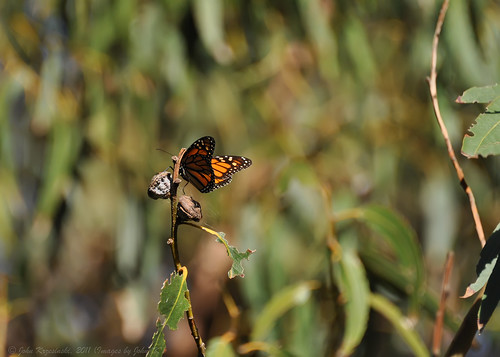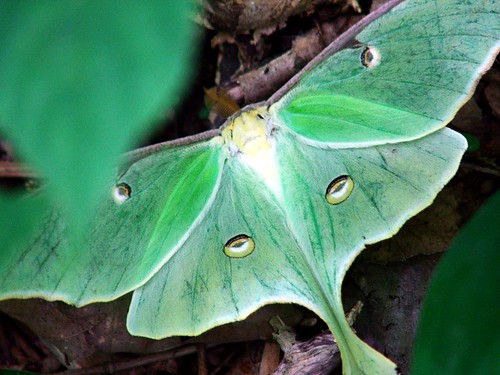Monarchs in the eucalyptus trees by Images by John ‘K’
Do you want to encourage more butterflies and moths to your garden? One generally thinks of planting shrubs and perennial flowers in the garden for the butterflies and moths. However you must consider that some of these butterflies and moths need trees. Some butterflies or moths lay their eggs on them and then need tree leaves where the larva will feed when they hatch. Some need trees to take shelter in. So if you are thinking of planting a tree in your yard, consider some of the trees that might encourage butterflies and moths to breed.
Here are just the needs of a few of the common butterflies or moths.
luna moth by Creativity+ Timothy K…
Starting with the Luna Moth -Actias luna, a beautiful green huge moth with a wingspan of 4 1/2 inches, that if you are lucky enough to have seen, is an exciting treat. This GardenLady has them. They love one tree TheGardenLady has on her property. The Luna Moth lays its eggs on the leaves of the black walnut tree. But the larva eat the leaves of numerous trees including sweetgum, American beech, red maple, hickories, white oak, black cherries, willows, American chestnut and smooth sumac. These are all trees that I either have on my property or are growing near my property (see here), and if you have them or are near them, you might be lucky enough to see one of these lovely moths that only fly at night.
Though Monarch butterflies need the nectar of milkweed and other flowering plants, they do need trees. Monarchs in western North America migrate to about 25 sites on the coast of California. There they take shelter in eucalyptus, pine, and cypress trees. Monarchs from east of the Rocky Mountains fly to Mexico. They go to about 14 forested sites in Mexico where they roost on oyamel firs and cypress trees. A single tree may have thousands of butterflies on it.http://www.learner.org/jnorth/tm/monarch/SanctuaryFactsOyamel.html
The Tiger Swallowtail, Papilio glaucus larva needs the tulip tree , Liriodendron tulipifera, Sweet bay- Magnolia virginiana, Wild black cherry- Prunus serotina and Prunus Virginia which is the choke cherry, the hop tree- Ptelea trifoliana and the American hornbeam- Carpinus carolinians.
The Western Tirger Swallowtail, Papilio rutulus, needs many trees including Prunus species like wild plums and cherries, Serviceberries- Amelanchier spp., Hawthorns, Craaegus spp., poplars, aspens, willow, Alnus spp.- birch family and Western sycamore- platanus racemosa.
The banded admiral, Limenitis arthemis arthemis needs Betula species which are the birches, especially the black birch and yellow birch and also Populus species which are the aspens plus a few other trees.
So if you are planning on planting a tree to add to your landscape, consider planting a tree that will be the nursery for butterflies or attractive moths. For more information on the subject read “Butterfly Gardening: Creating Summer Magic In Your Garden” by Xerces Society/Smithsonian Institution. And check out this wonderful site on North American Moths.


